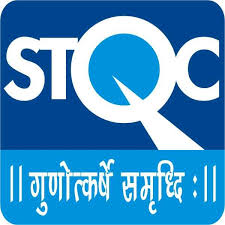Beijing July 12, 2012
CHINA PV SUMMIT Organized by China Renewable Energy Industries Association (CREIA) Speech & Presentation on “Solar Industry in India” By K. Nagaraj Naidu, Counsellor (T&C), Embassy of India, Beijing July 12, 2012
India supports around 17% of the world population but its energy use is only around 5% of the world’s consumption. The country’s per capita consumption of energy and electricity is less than one third of the world average. In order to sustain a growth rate of over 8% through the next two decades, India would need to grow its primary energy supply by 3 to 4 times and electricity supply by at least 5 to 7 times of its current consumption. In a business-as-usual scenario, the country might need to import over 90% of its requirement of oil and over 45% of its requirement of coal. This demands an overarching energy strategy that would provide a reliable and sustainable energy supply through a diverse and sustainable fuel-mix. This is also the reason that while striving to bridge its energy deficit, India must necessarily increase its share of clean, sustainable, new and renewable energy sources. Figure-1, gives a glimpse of the energy mix of the country, which at present is overwhelmingly dependent on thermal energy.
Figure No-1: Installed Power Capacity in India (March 2012)
speech
Figure No-2: Installed Renewable Power Capacity in India (March 2012)
speech
2. Renewable power represents about 12% of total installed electricity generation capacity in India. From Figure-2 (above), we can see that the current installed renewable grid-connected capacity is about 25 GW. This represents an almost 150% increase over the last 5 years alone. India today stands among the top five countries of the world in terms of renewable energy capacity. India’s National Action Plan on Climate Change mandates an increase in the share of renewable power in the electricity mix to 15% by the year 2020. Investment in renewables also grew by 52% last year, when India invested about US$ 10.3 billion in renewable projects. Ernst &Young ranks India as the 4th most attractive investment destination in the renewable sector.
3. Figure-3 (below) talks about the renewable capacity addition in each of India’s last three 5 year plan periods. If you look at the capacity additions of renewable energy that we have made across the plan periods, the results have been commendable. In the 12th Plan period we are planning a deployment target of around 30 GW. By the end of the 12th Five year plan or by 2017 it is estimated that the total capacity addition in the renewable sector will reach 55 GW.
Figure-3: Renewable Capacity Addition during Plan Periods
speech
National Solar Mission (NSM)
4. The capstone of India’s renewable effort is the formulation of the National Solar Mission, which was announced in January 2010. NSM is one of the eight national missions under the National Action Plan on Climate Change. The Mission aims to support research, development and innovation, capacity building and a robust manufacturing ecosystem to achieve grid-parity in the shortest time frame.
Figure-4: Targets of the National Solar Mission (NSM)
Application Segment Target for Phase-I (2010-13) Cumulative Target for Phase-2 (2013-17) Cumulative Target for Phase-3 (2017-22)
Grid solar power (large plants, roof top & distribution grid plants) 1.1 GW 4 – 10 GW 20 GW
Off-grid solar applications 200 MW 1 GW 2 GW
Solar Thermal Collectors (SWHs, solar cooking/cooling, Industrial process heat applications etc.) 7 million sqmts 15 million sqmts 20 million sqmts
Solar Lighting System 5 million 10 million 20 million
5. The table above summarizes the targets that need to be achieved by NSM by year 2022. The goal of the National Solar Mission is to install 20 GW of grid-connected and 2 GW off-grid solar power by 2022. Other targets include installation of solar thermal collectors over an area of 20 million square meters and to install 20 million rural households with solar home lighting by 2022. For each of the three phases there are targets for grid-connected solar power through the mandatory use of Renewable Purchase Obligations by utilities backed with a preferential tariff. We are currently in the first phase of execution of NSM.
National Solar Mission Strategy
6. To provide an enabling policy and regulatory framework for the solar industry, the Indian government introduced solar-specific renewable portfolio obligations (RPO) for power utilities with a specific solar component capped at 0.25% in Phase-1 (2013) to increase to 3% by 2022. The introduction of RPOs is expected to drive utility-scale power generation, whether solar PV or solar thermal. The government also introduced competitive bidding to select utility-scale power projects. Tradable solar-specific Renewable Energy Certificate Mechanism (REC) has been introduced to bridge the mismatch between the availability of solar power and the obligation placed on entities to source a portion of their power requirement from renewable energy resources. The government has also introduced refinancing to lower interest rates (5%) for off-grid applications, capital subsidies ranging from 30% to 90% for innovative applications of solar energy and exempted solar power projects from environmental clearance. Grant support for R&D and technology demonstration projects has been put in place.
7. Government of India is of the view that the key opportunity for solar power lies in the off-grid solar applications. While the target of 2 GW for off-grid applications by 2022 under the National Solar Mission appears small, its reach is expected to bring changes to the lives of millions of rural households in India. In order to improve efficiencies in existing materials, devices and applications, to develop cost-effective storage technologies, to test hybrid co-generation etc., the government will focus heavily on research and development. Pilot demonstration projects would be undertaken to promote technology development and cost reduction.
8. Currently the bulk of India’s solar PV industry is dependent on imports of critical raw materials and components including silicon wafers. India has PV module manufacturing capacity of about 1170 MW, which is expected to increase in the next few years. Existing indigenous capacity to manufacture silicon material is low. There is no indigenous capacity for solar thermal power projects. Opportunity for manufacture exists in concentrator collectors, receivers and other components. Transforming India into a solar manufacturing hub would include a leadership role in low-cost, high quality solar manufacturing. One of the objectives of the National Solar Mission is to take global leadership role in solar manufacturing across the value chain Participation in projects under the NSM requires the project developers to source some of their material requirement from domestic producers of solar equipment. For instance, Batch-1 of Phase-1 of NSM required solar photovoltaic (PV) projects using crystalline silicon technology to source modules manufactured in India. 30% domestic content was also mandatory for solar thermal projects in Phase-1. Thereafter, Batch-2 of Phase-1 required solar photovoltaic (PV) projects using crystalline silicon technology to use both the cells and modules manufactured in India.
9. According to a KPMG study it is estimated that India would need investments to the tune of US$ 110 billion over the next 10 years to achieve its energy goals. To promote photovoltaic manufacturing plants including domestic manufacture of silicon materials, the government has announced an attractive Special Incentive Package. Incentives include:
» No customs & Excise duty on cells and modules
» No Additional Custom Duty (ACD) on the Import of Plant & Machinery for setting up of solar power projects and Basic Customs duty at 5.15%
» No ACD for goods imported for manufacturing of solar cells and modules and the total custom duty applicable has come down to 9.35%.
R&D Initiatives
10. The Ministry of New and Renewable Energy in India has designated the Solar Energy Center in Delhi as a center of excellence. The SEC will be the lead center in India for the development of reliable and cost effective solar energy technologies. SEC also provides testing facilities for various kinds of solar technologies and also conducts training and exchange programs. The Ministry of New and Renewable Energy has also entrusted SEC to undertake a number of pilot projects. Some of the recent projects undertaken by SEC include:
» The setting up of the Solar Thermal Testing Research and Simulation facility. The facility envisages a grid connected Solar Thermal Power Plant of 1 MW capacity and will include a test set up that enables companies and research institutions to test the performance of different solar concentrators, coatings and materials, components and system for a Solar Thermal Power Plant. » The second facility is a pilot project based on an indigenously developed solar concentrator technology that promises delivering low cost thermal energy. It involves demonstration and evaluation of 4 interconnected dish concentrators each of 90m2 aperture area providing heated thermic fluids up to 4000C.
» A 20 kW solar photovoltaic power plant for validation of various design configurations.
» A Concentrated Solar Power (CSP) Central Receiver plant is also being developed at the SEC.
NSM-Phase I, Grid Solar Power
11. Feed-in-Tariff is a crucial aspect of any country’s solar policy aimed at developing the market for solar energy. Policymakers worldwide have been experimenting with different approaches to determine the right Feed-in-Tariff as a “one-size-fits-all” strategy. However, arriving at such a formula is still a distant dream, given that the solar sector itself is in its nascent stage of evolution. In India, the government went in for the reverse bidding mechanism for inviting bids from interested solar project developers. Under this system, India’s Central Electricity Regulatory Commission (CERC) fixed the maximum tariff as the ceiling price and bidders had to place their bids below that ceiling. Ultimately the lowest bidders would be selected for projects for implementing the projects in Phase-1 of the National Solar Mission. The rationale behind the reverse bidding mechanism was to make the Feed-in-tariff market based. In the last two years (after bidding for two Batches of Phase-I of the National Solar Mission was completed) the feed-in-tariff for solar, in India, declined by almost 51%. Given the trend and on the assumption that all upcoming projects selected under the NSM would prove successful, solar energy is expected to achieve grid-tariff parity much earlier than 2022 as originally anticipated under the NSM. An overwhelming response from project developers based on the rapid decline in solar PV prices also contributed to the low prices during the bidding stage. Figure-5 placed below shows the difference between the set tariff and the bid tariff achieved during bidding of Solar Photovoltaic (SPV) and Solar Thermal (ST) Projects in Phase -1 of the NSM.
Figure 5: Set Tariff Vs Bid Tariff
speech
Notes:
» Solar Photovoltaic (PV) : Batch I Projects:
i:- 30 projects for 150 MW selected in December, 2010.
ii:- Average Tariff: Rs. 12.16 (RMB 1.7) per unit (32% reduction on CERC Tariff of Rs. 17.91)
iii:- 25 Projects completed
» Solar Photovoltaic (PV) : Batch II Projects:
i:- 28 projects for 350 MW selected in December, 2010.
ii:- Average tariff: Rs. 8.77 (RMB 1.25) per unit (43% reduction on CERC Tariff of Rs. 15.39)
iii:- To be commissioned by February 2013.
» Solar Thermal (ST) :
i:- 7 projects for 470 MW selected in December, 2010.
ii:- Average Tariff Rs. 11.48 (RMB 1.6) per unit (25% reduction on CERC Tariff)
ii:- To be commissioned by middle of 2013
Achieving of Targets
12. Government of India has made tangible progress in moving closer to achieving the targets fixed under Phase-1 of the NSM which ends in 2013. For instance, Phase-1 required the installation of 1.1 GW of grid connected solar power. However, by end-March 2012, 1 GW of new installed solar power has already been grid connected. In the off-grid segment, out of a target of 200 MW by 2013, 118 MW of off-grid capacity has been sanctioned so far. In the Solar Thermal segment, out of the installation target of 7 million square meters of solar collector area by 2013, 5.5 million square meters of solar thermal collectors has been installed so far. The success achieved so far, seems to have provided the right momentum to the government to push for early realization of targets fixed in the subsequent phases of the NSM.
Thank You
Note: All facts and figures used in this speech/presentation have been provided by the Ministry of New and Renewable Energy, Government of India.





























